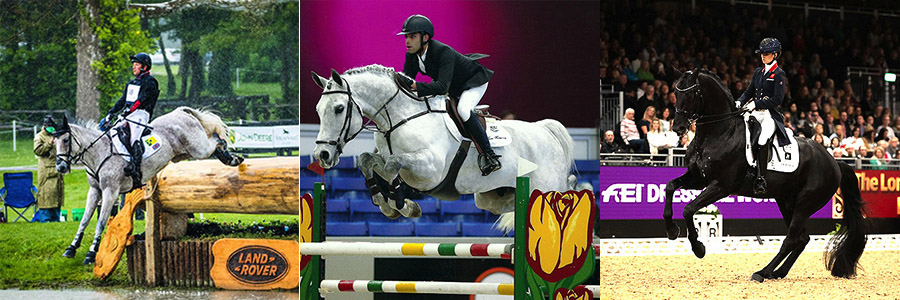
Christopher Hector reviews the latest breeding rankings from the World Breeding Federation of Sporthorses…
It’s that time of the year again when the World Breeding Federation for Sporthorses releases its annual breeders, sires and studbooks rankings. Since the role of the studbook has changed so dramatically over the past thirty years, it might be useful to consider exactly what a studbook is, and what it does.
The model of all studbooks is the General Stud Book founded in Great Britain in 1791. This is the organisation that controls the breeding of Thoroughbred horses all over the world, but compared to the European books that cover the various Warmblood breeds, its aims have always been modest.
The General Studbook lays down strict rules covering breeding, but again, the rule is simple, live cover is the only insemination allowed, it makes no attempt to tell the breeders which mares to use, or which stallions to send them to, it leaves those sorts of decisions to the racetrack.
The European books were somewhat different since they were in the main, founded by rulers in search of better horses for their cavalry to ride. They actively sought out better stallions, making them available to the farmers and rewarded breeders with premiums for better mares. Great power lay in the hands of the director of the state stud, and the colts he selected, and the districts he sent them to, shaped the foals of the future.
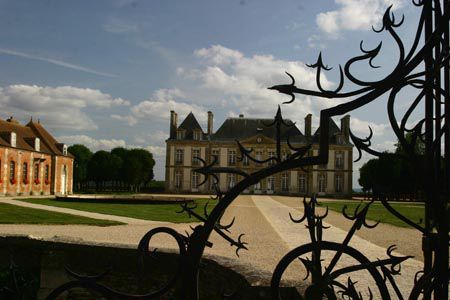
The great French Studs are empty…
In 2023, this system has almost entirely disappeared. In France the great State Studs have closed, and throughout the world the private stallion stations have become more and more influential.
Once we made a distinction between the ‘Studbook’ with its volumes of rules and regulations, stallion licensing, and performance tests and mere ‘Registries’, organizations that offered, for a price, pedigree papers without all the rigmarole of the studbooks. Now that difference is not quite so apparent, indeed some of these registries have been quite successful, more successful even than some of the traditional studbooks.
Recently the WBFSH organized a grand contest of the studbooks, the WBFSH Studbooks Jumping Global Champions Trophy, held at Jan Tops’ Valkenswaard arena. Ironically this showcase of studbooks simply reinforced the feeling that studbooks are increasingly irrelevant in the business of sporthorse breeding.
To take one of many examples, the Six Year Old title, which was won by the Belgian Warmblood book.
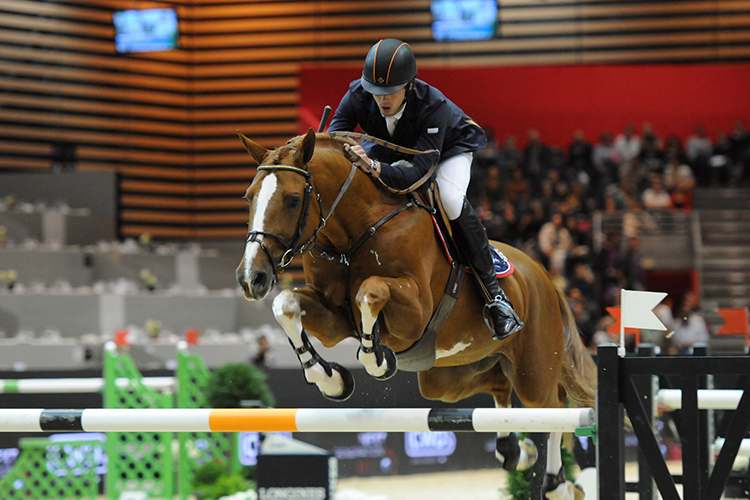
Emerald van’t Ruytershof
I think the horse that led their charge, Ransome III, makes my point fairly decisively. The bay gelding is by El Barone III Z, whose sire Emerald van’t Ruytershof is branded BWP, though Emerald is by the great Selle Français sire, Diamant de Sémilly out of a Zangersheide branded mare, by the Holsteiner, Carthago out of a BWP branded Selle Français / Hanoverian mare.
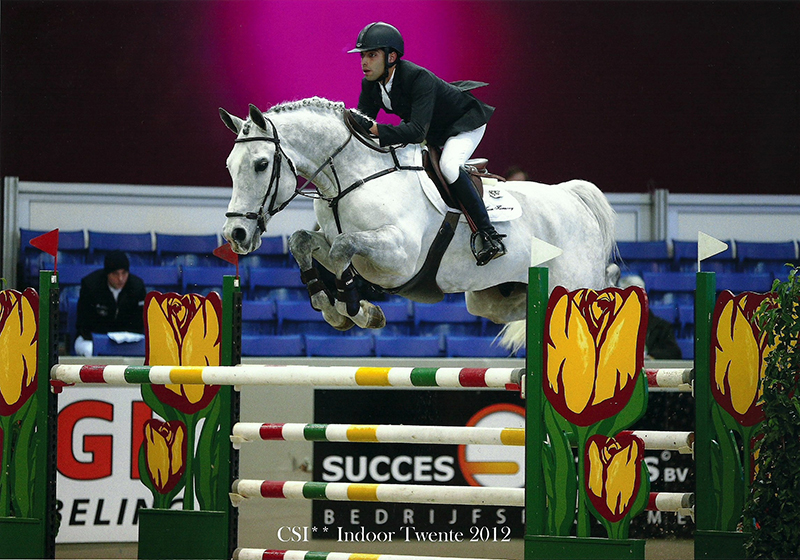
Der Senaat III
On the mare line Ransome III is out of Die van de Pol Z by the BWP stallion, Der Senaat III who is by the KWPN stallion, President, who combines the Holsteiner, Clinton with the Hanoverian, Voltaire. Die van de Pol is out of Alinka by Power Light the Hanoverian son of the great Westfalien, Pilot, out of a solidly Holsteiner mare, by Cash (Cor de la Bryère) out of a Ramiro mare.
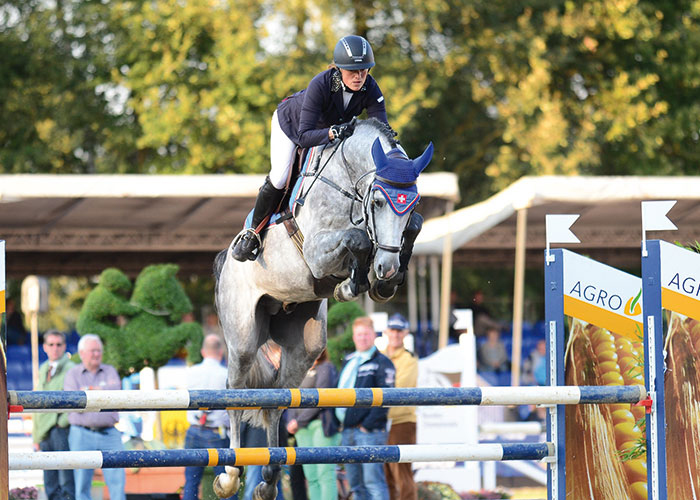
Chacoon Blue
Number two in the BWP team, Rhapsody van het Netehof is by the Mecklenburg stallion, Chacoon Blue, by the most famous stallion to bear the Mecklenburg brand, Chacco-Blue. The Mecklenburg component is a nicely balanced mix of Holsteiner and Hanoverian. But in this case the mare, Caprice van het Netehof is recognizably Belgian, by the stallion that ‘made’ the Belgian book, Darco, and out of a mare that is three generations, BWP.
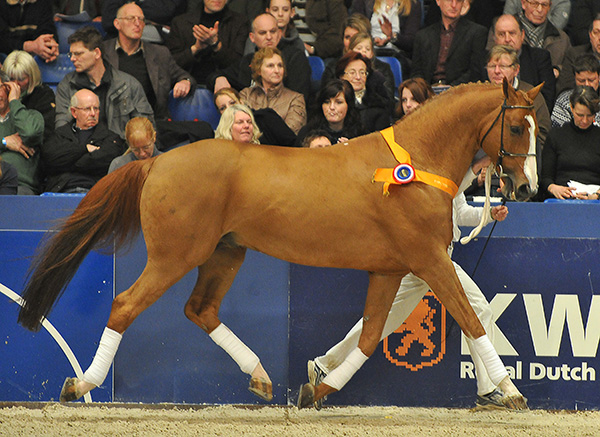
Tangelo van de Zuuthoeve
Rounding out the champion Belgian team is the stallion, Rhythm-K van t’ Kattenheye who is by Tangelo van de Zuuthoeve, born in Holland, but combining two of the French greats, Narcos II and Laudanum xx with three of the founding sires of Zangersheide, Ramiro, Almé and Gotthard through the mare, Racyona Z who was branded Hanoverian, the result of the marriage of convenience between Zangersheide and the Hanoverian Verband that lasted through the 1970s until Leon Melchior established the Zangersheide book in 1992. Rhythm’s dam is by the stallion star of the BWP book, Cornet Obolensky who is by the Holsteiner, Clinton, out of the BWP mare, Rabanna van Costersveld, by the great Dutch stallion Heartbreaker out of a mare by Randel Z, once again, the classic Zandergsheide triumvirate – the Holsteiner, Ramiro, the Selle Français, Almé and the Hanoverian, Gotthard.
And actually the Belgian contingent at Valkenswaard had a greater component of their own ‘Belgian’ blood in its team than the degree to which most of the other books featured horses recognizably of ‘their’ blood..
Back to this year’s WBFSH rankings. This time round, the jumping studbook rankings are headed by one of the last books to open itself to ‘outside’ blood, the Selle Français with 8,317 points, followed by the Holsteiners on 8,084, and Zangersheide with 7.677.
And just to upset the thesis I was developing about how today’s horses grab blood from books all over the world and the distinctive studbook breeding lines are disappearing, the leading French horse, Donatello d’Auge has a pedigree that is as French as a croissant with coffee. The gelding is by Jarnac (by the French Anglo Arab, Ryan d/Anzex out of a J’T’Adore mare), and he is out of an Olisco / Galoubet A mare – it doesn’t get more French than that!
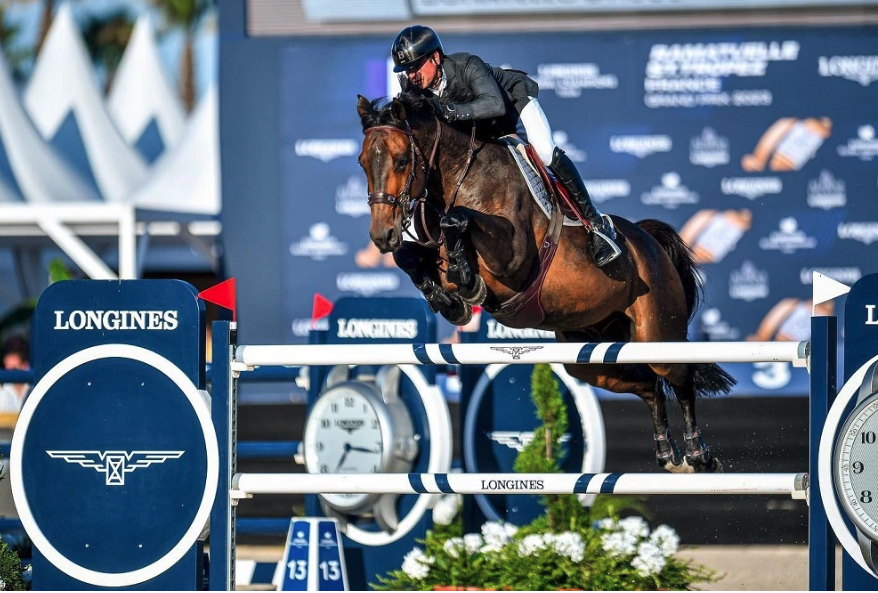
Donatello d’Auge (StefanoGrosso/LGCT photo)
Really the only member of the SF team heavily infused with ‘foreign’ blood is their fourth representative, Caracole de la Roque who adds the Westfalian Polydor and the Hanoverian Voltaire (via Kannan) to the equation.
The second placed Holstein group is led by Theo 160 who is solidly Holstein bred, by Christian, a Carthago grandson, via that great jumping mare, Taggi. The only outside influence comes from his grand-dam, a heady mix of Selle Français and lots of Hanoverian.
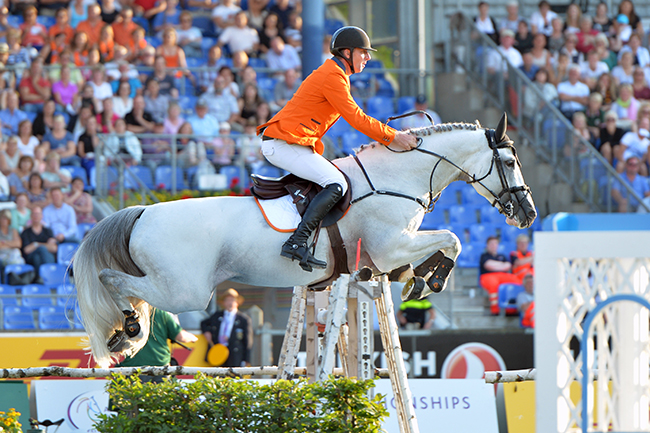
Zirocco Blue
However it should be noted that two of the Holstein five are by Zirocco Blue, acquired by Wiepke van der Lageweg in France. The stallion is a mix of Dutch, Oldenburg and Selle Français blood, and I was somewhat surprised to find that even on the third line of his pedigree, there is not one horse bearing the Holsteiner brand.
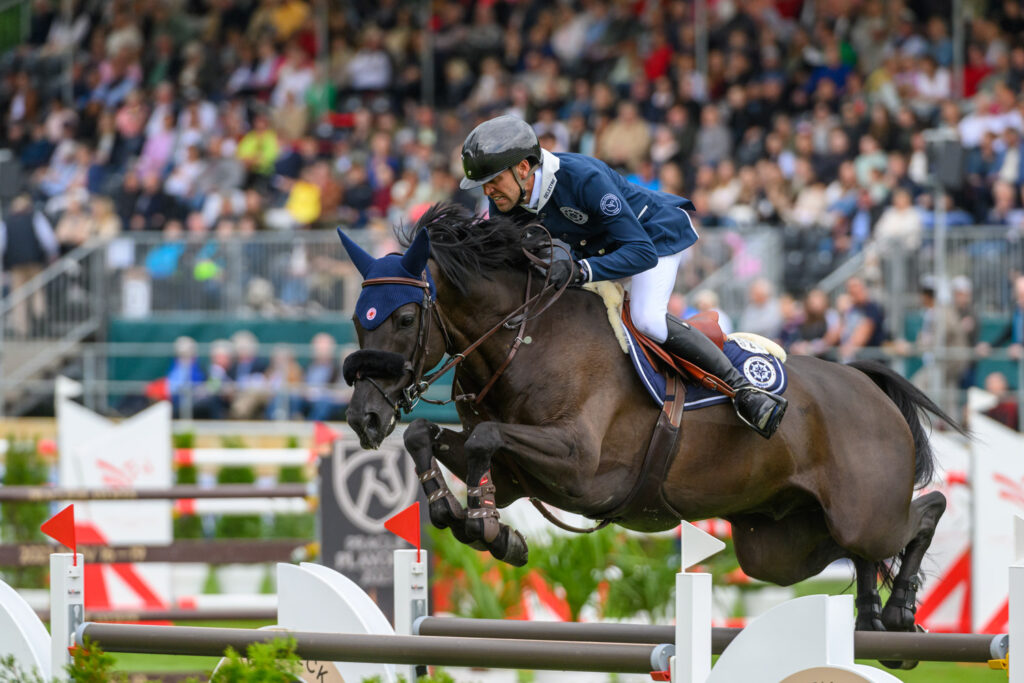
Dexter Fontenis Z
(Equitaris/Dr Tanja Becker photo)
Coming in third is Zangersheide, but this time round, my the same blood is spread everywhere thesis is looking healthier, since the most successful Z jumper shows no trace of Leon Melchior’s breeding program. The stallion, Dexter Fontenis Z is by the Holsteiner, Diarado, that much vaunted amalgam of Diamant de Sémilly and Corrado, out of a mare that combines Voltaire and Grand Veneur. But it does in fact remind us that Leon Melchior was one of the first to advocate hybrid vigour, based on his researches into pig and poultry breeding, and he set about deliberately crossing the best of the French over the best of the German.
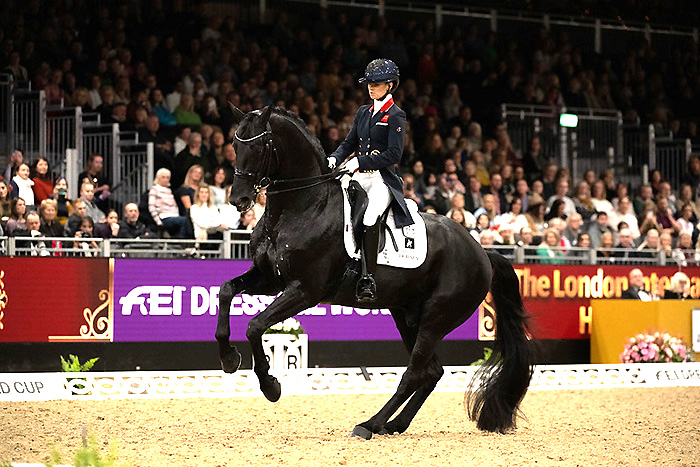
Glamourdale
Turning to the dressage standings, we find the leading book, the KWPN with 14,770 points, followed by Oldenburg, 13,599 and the Hanoverians, 12,461. The Dutch were the first to specialise, creating two lines, jumping and dressage, while the other leading books were still proclaiming the aim of breeding the all-round horse, now it would seem the Dutch breeders are reaping the rewards. Whereas once the successful Dutch dressage horses had a hearty infusion of German blood, now their team is solidly the product of their own Dutch lines.
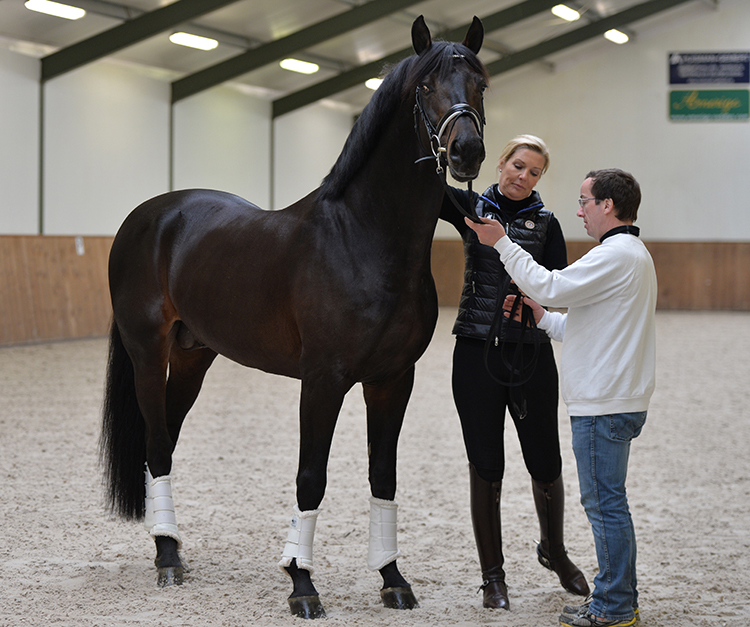
Lord Leatherdale
Although it should be noted that the Dutch breeders are happy to border hop in the search of the best nick. Thus the number one in the KWPN team, Glamourdale is indeed a German/Dutch fusion. Studmaster, Gert jan Van Olst explains why, to compliment the blood of his foundation sire Negro, (who is third generation Dutch dressage breeding, by Ferro out of a Variant mare, two stallions that competed at FEI level) he went to Germany where he and his wife, Ann, found the Rheinlander, Lord Leatherdale – by Lord Loxley out of a Ferragamo mare…
“In Holland we had many sons and daughters of Jazz and Krack and their lines, so we needed new blood, that’s why we bought Lord Leatherdale. The other reason was that I thought his good things were fitting quite well on the good things of Negro. We had a lot of Negro mares, and he was a nice stallion to combine with the Negro mares. Lord Leatherdale gives a lot of looseness, and a lot of presence and a lot of front, those things he brings very well to the Negro mares, they are mostly a little bit more closed, having a lot of power and missing a little bit of suppleness when it comes to the lateral movements. The strong things of Negro are very nice combined with Lord Leatherdale, and it has been a successful combination: Chippendale, Everdale, we have Fairytale, we have Glamourdale, all from this combination.”
It’s interesting that while Lord Sinclair, who founded the line that lead to Leatherdale through Lord Loxley, and who was the first of the Bundeschampionate mega-stars after consecutive wins in the stallion classes and gaining a huge book of mares in his first season, was withdrawn from breeding a couple of seasons later, shunned by the mare owners. His legacy has been felt far more in Holland than his native Germany.
And sure enough, the second member of the Dutch team for Stud Book rankings, 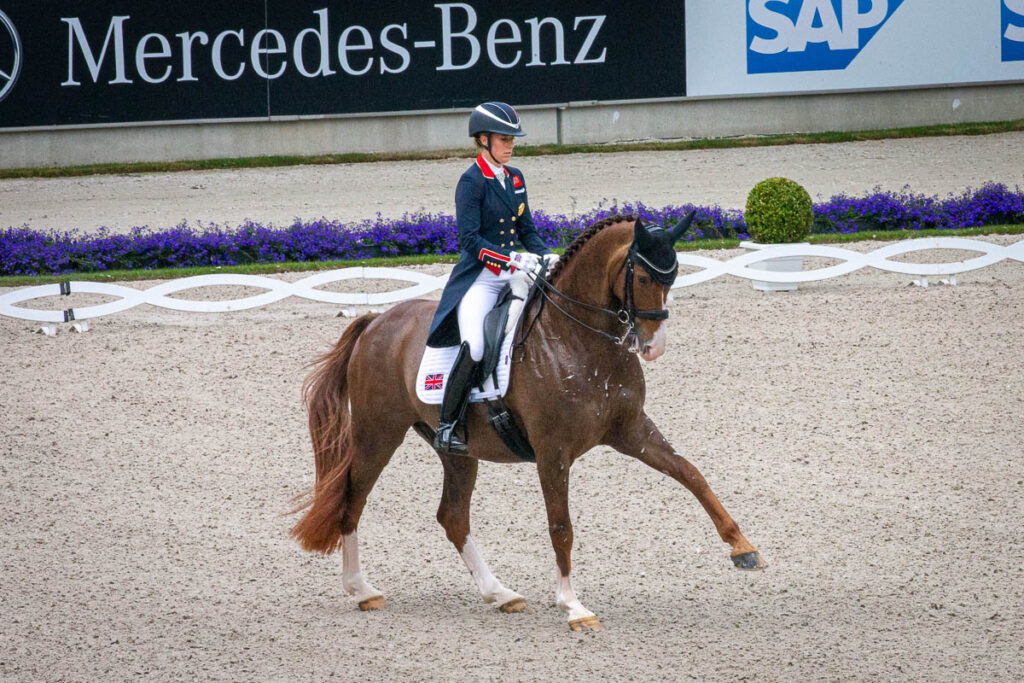
Imhotep (Rebecca Ashton photo)
Imhotep, is by Everdale, and out of a mare that is second generation Dutch dressage, by the small tour competitor, Vivaldi out of a mare by the Grand Prix competitor, Krack C.
 Hermès
Hermès
Rounding up the Dutch top three we have another international Grand Prix star, Hermès NOP, by the small tour competitor, Easy Game, by the Grand Prix star, Gribaldi out of a mare by another Grand Prix competitor, Schwadroneur. That’s all Trakehner blood, and it would seem that the Dutch breeders, in particular the canny Joop van Uytert, have made better use of what the Trakehner has to offer, than their German neighbours.
Second in the dressage studbook rankings is Oldenburg, a book that has prided itself on being open and innovative thanks to high powered private stallion keepers who flourished in the absence of a State Stud. Their representatives this time around were suitably eclectic.
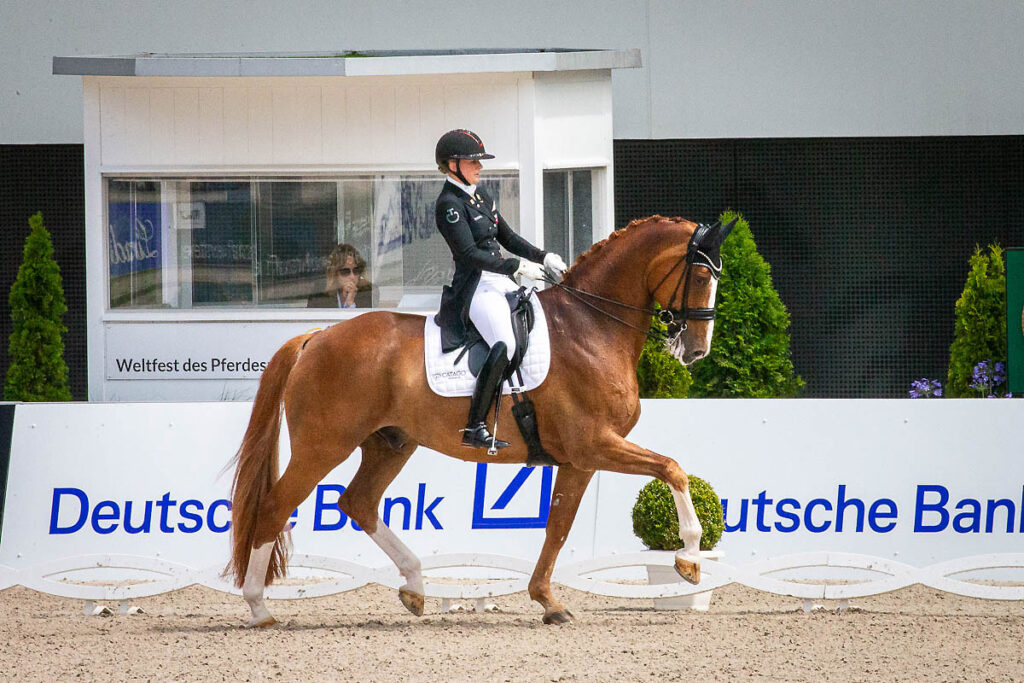
Zepter (Rebecca Ashton pic)
I have a problem when people buy a horse and immediately put their own prefix on the name, sometimes removing the breeder’s prefix. Zepter may be called Blue Hors Zepter but he was in fact bred by well-known Oldenburg breeders Bernhard and Britta Sieverding. The Sieverdings are full-time horse breeders and breed about 15 foals each year on their farm in Twistringen. They breed on several different dam-lines, of which Zepter’s dam-line is represented by no fewer than three breeding mares. The breeding program of the couple goes all the way back to the Schokolade dam-line, which has also produced horses such as WCYH winner Don Martillo and Jessica von Bredow-Werndl’s Grand Prix horse Ferdinand BB. Jessica’s Ferdinand BB was born on Britta and Bernhard’s farm, just like Zepter and many more breeding stallions and top dressage horses.
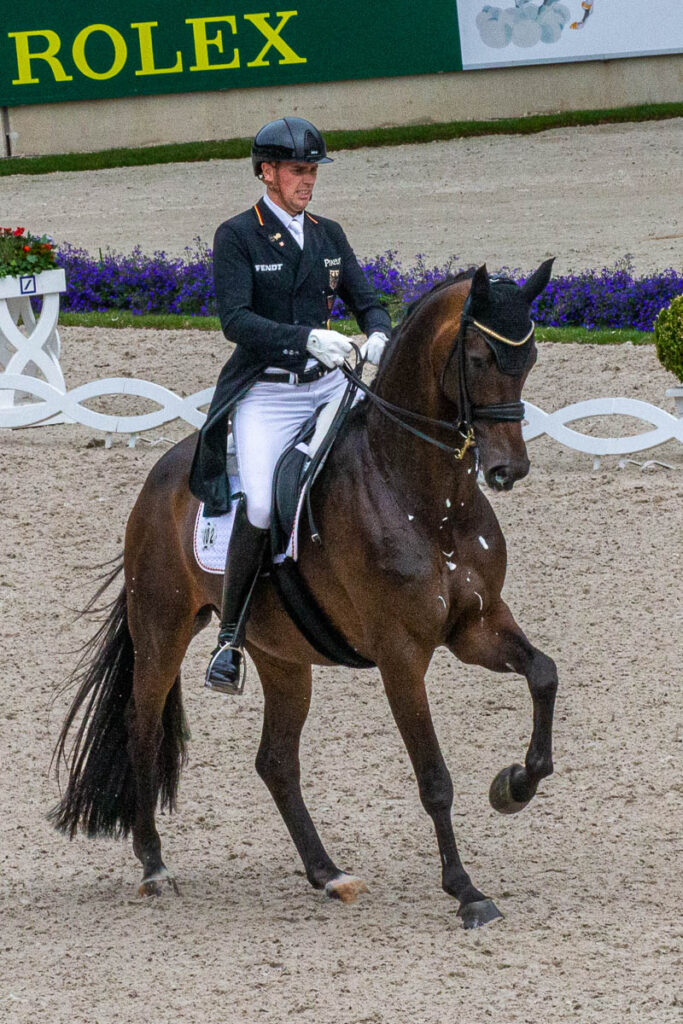
Bluetooth (Rebecca Ashton photo)
The gelding Bluetooth was the second highest point scorer for Oldenburg. I must confess that when I first saw him he looked so long in the back and strung out that I doubted he could ever make Grand Prix, Wrong. Frederic Wandres has proven how good training can alter the shape and balance of a dressage horse. Bluetooth is by the Dutch stallion, Bordeaux whose pedigree is packed with dressage talent. He is by the small tour competitor, United, by Grand Prix star, Krack C, out of Nessica by another GP star, Partout. United is out of a Gribaldi / Donnerhall mare.
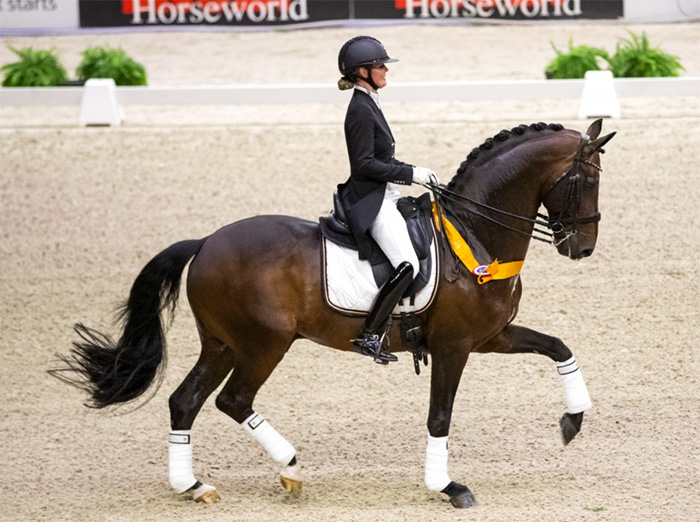
Bordeaux
Bordeaux is out of Lorena by Riccione, a grandson of Rubinstein, but then we hit dressage royalty since Lorena is by Don Schufro out of Loretta, the superstar of Paul Schockemöhle’s mare band, and also the dam of Sandro Hit and Diamond Hit.
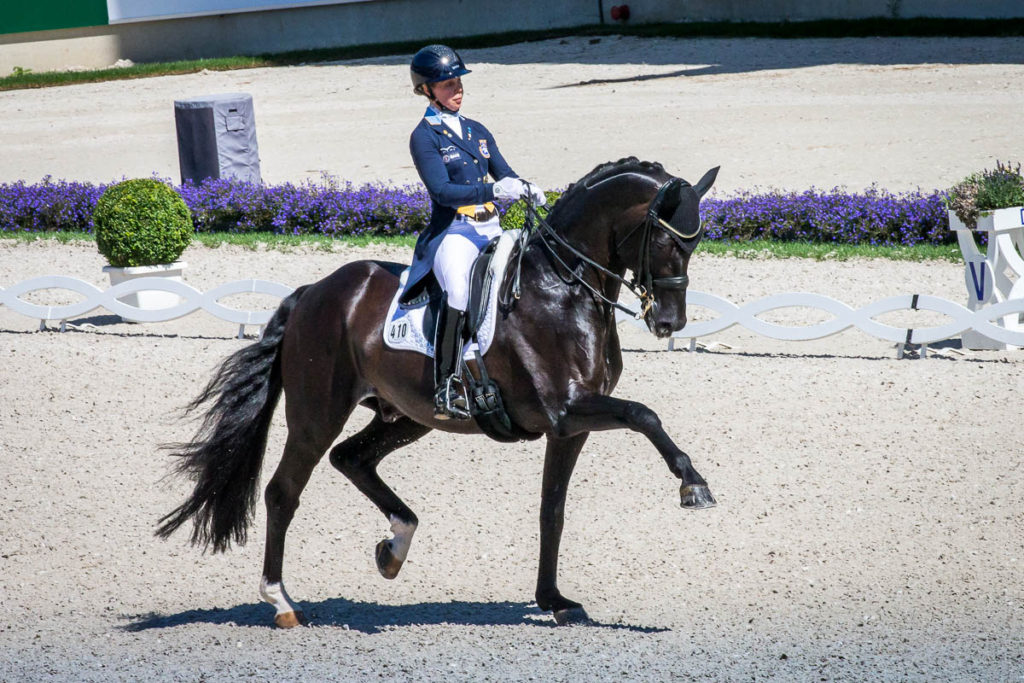
Dante Weltino
Third in Team Oldenburg is Dante Weltino, by Danone who is by De Niro out of a Weltmeyer mare, with another cross of Weltmeyer on his dam line, along with a half-blood mare by Noble Roi xx.
The Hanoverian studbook took third place in the rankings, with their squad lead by Ingrid Klimke and Franziskus. The dark brown stallion is once again obviously bred for dressage, his sire Fidertanz competed Grand Prix as did his sire, Fidermark, while his dam is by Alabaster who never progressed past Advanced/Medium, Alabaster was definitely selected as a dressage sire by master breeder, the late Werner Schockemöhle. Alabaster is by Akzent out of a mare by Grand Prix competitor, Rubinstein.
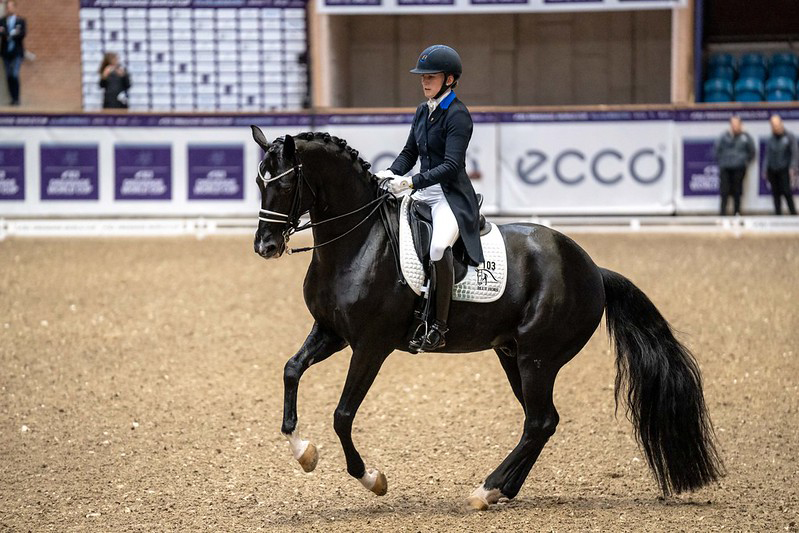
Blue Hors St Schufro
Their number two, Blue Hors St Schufro has already commenced a very promising international career with Nanna Skodborg Merrald, and while he doesn’t get much in the way of dressage accolades on his Sandro Hit top line, his dam is by Grand Prix star, Don Schufro (Donnerhall / Pik Bube I). The mare line under that is solidly Hanoverian.
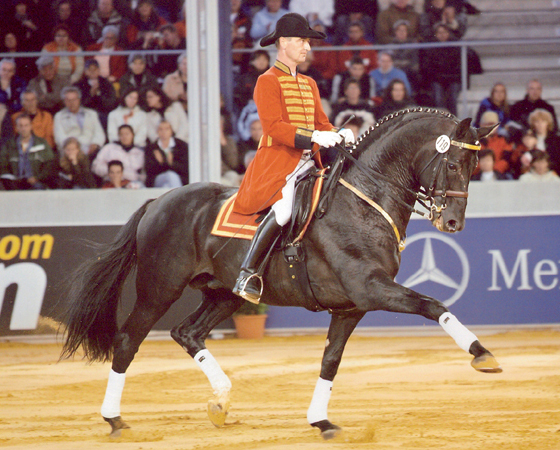
Don Frederico
Third in the Hanoverian team, FRH Davinia la Douce is by one of the most popular and successful Celle stallions of recent times, Don Frederico, at least he was before the WFFS nonsense. Don Frederico is by Donnerhall out of a mare by another Trakehner, Consul. Davinia’s dam, Anneliese is suitably solidly Hanoverian bred, by the Argentinus son, A Jungle Prince, out of an Akzent II mare.
The Irish emerged as the top eventing studbook this year with 1,318, just in front of another traditional source of eventing stars, the French on 1,292. The Dutch are relative newcomers to the eventing scene but have gradually been moving up the rankings, They were sixth two years ago, but third this time on 1,268.
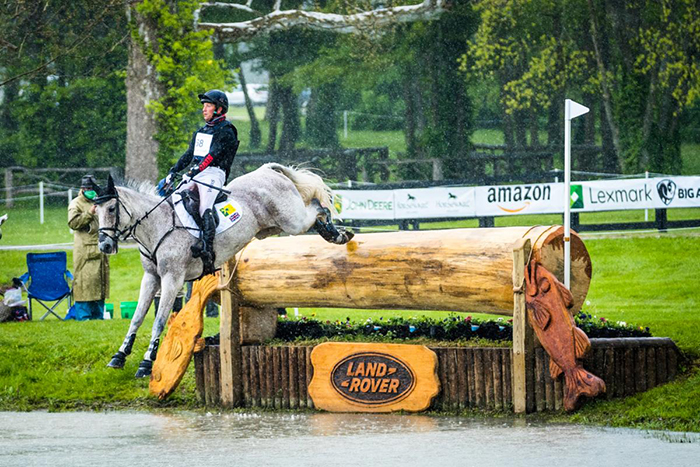
Oliver Townend and Ballagmoor Class
Ireland has long been a source of eventing talent, but with the evolution of the sport, Irish breeders have turned to European jumping blood to stay competitive. Thus the leading Irish eventer, Ballaghmoor Class is by Courage II perhaps the most successful of modern Irish eventing stallions, trouble is, he was straight Holsteiner. Courage II, was by Capitol out of Vamara (Cor de la Bryère / Liguster). Vamara was the full-sister to Cavalier Royale, another Holsteiner import who played a key role in resuscitating Irish eventing breeding. Cavalier Royale was for many years ranked in the top three of eventing sires on the WBFSH list. Courage II stood at Kedrah House, for several seasons until his death in 2006 but his offspring continue to shine almost 20 years later…
Second in the Irish team Rehy Dj again draws on European blood, he is by the Westfalien stallion Inspector, who combines Indoctro and Contender, out of a mare by the Thoroughbred , Big Sink Hope, but out of Lady Moore by Cavalier Royale.
There’s more non-Irish blood in the veins of the third member of the team, Black Ice. The gelding is by the Dutch bred Vechta (Voltaire / Joost) out of a mare by the Galoubet son, Touchdown.
On to the dressage sires rankings to see what we will discover…
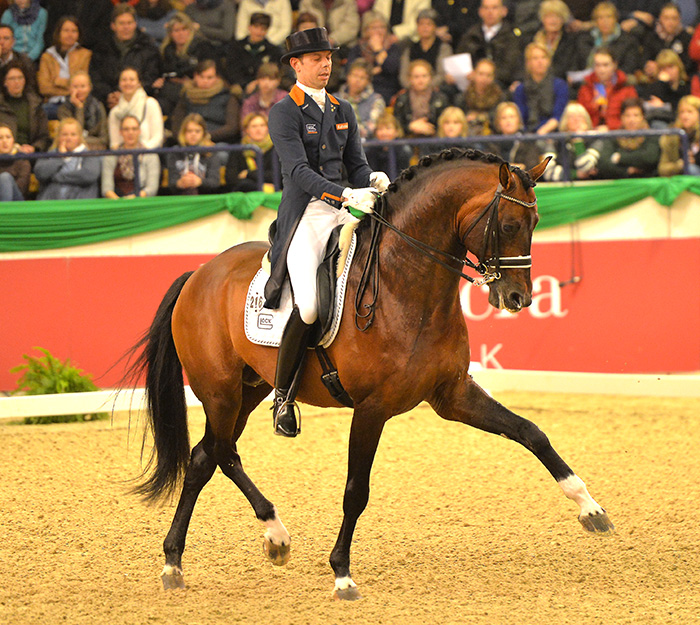
Johnson – he’s Number 1
The Dutch stallion Johnson (Jazz / Flemmingh) moves up from 2nd to 1st, while his sire, Jazz gracefully slides to 5th. Last year’s number one, Sandro Hit slips to 9th, reinforcing doubts about him as a genuine Grand Prix sire, since his first place was largely due to one horse, Salvino, though Johnson’s pre-eminence is also somewhat compromised as his best international competitor Edison (Balzflug) ranks 34th in the world.
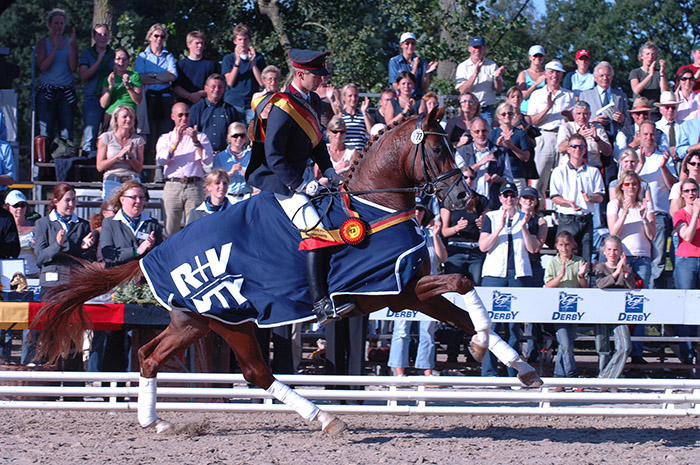
Quaterback
The second ranked stallion, Quaterback (Quaterman / Brandenburger) boasts two of the world’s top ten, Isabel Werth’s DSP Quantaz, out of a mare by that wonderful Trakehner, Hohenstein, who is 5th on the world standings, and the Swedish bred, Touchdown, out of a mare by Sack, by the Swedish Stallion, by Kaliber, by Utrillo (Hann) . Touchdown and Patrik Kittel took out the first World Cup qualifier of the 2023 season in Herning.
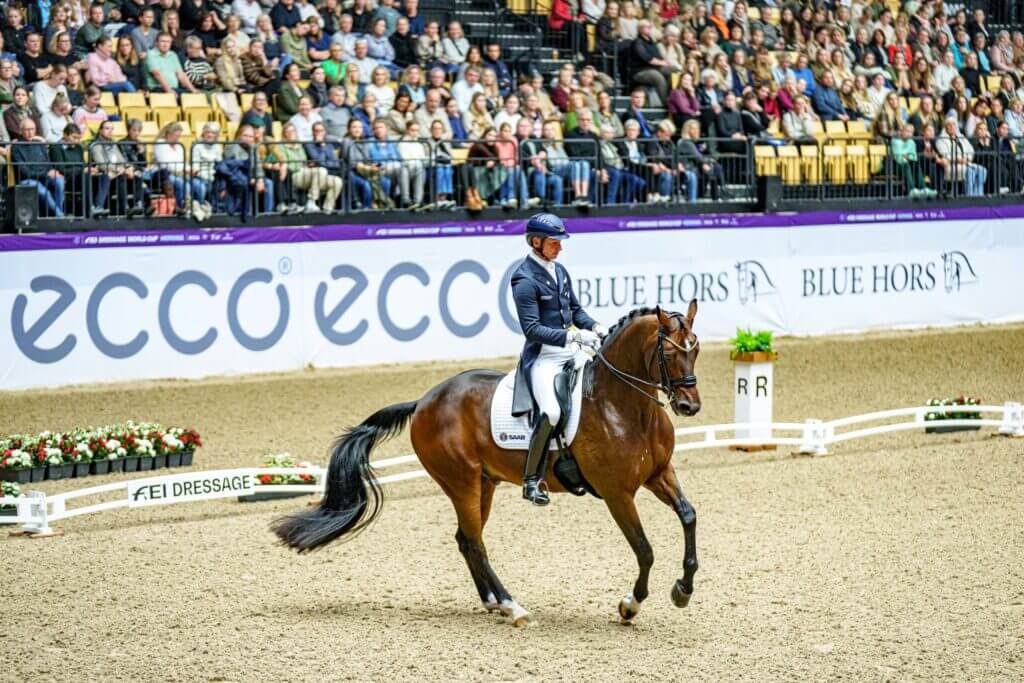
Touchdown (Kim C Lundin pic)
There is only one other stallion in the WBFSH top ten sires with a representative in the world’s top ten competitors, and that’s Sandro Hit with Salvino ranked eighth.
The next two stallions, Sir Donnerhall I and Totilas stand at Paul Schockemöhle’s power-house stallion station, which gives them a head start thanks to the loyal band of mare owners who turn to PSI year after year, not to mention the extremely effective marketing operation.
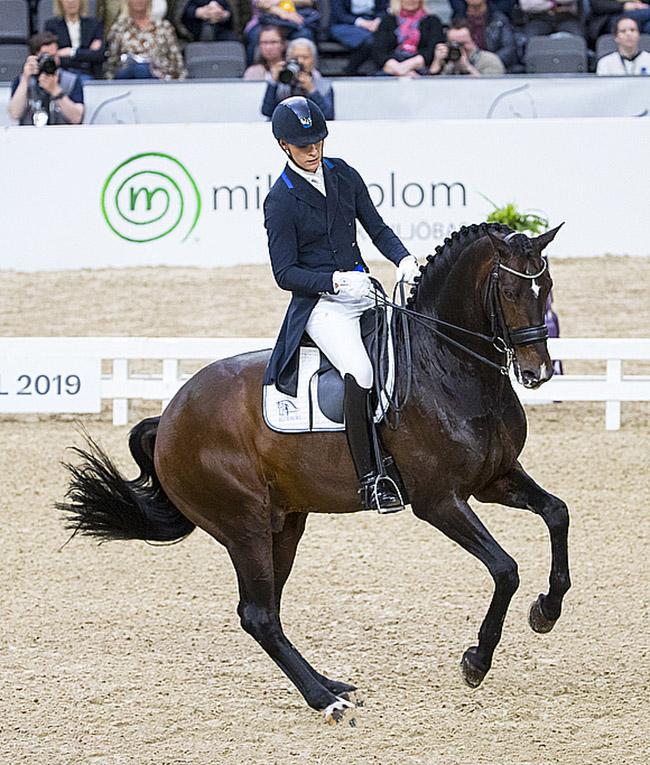 Zack
Zack
While Jazz is quietly fading (his best ranks 84th in the world), the shooting star is Blue Hors Zack, up from 27th last year to 6th although once again this is largely thanks to one horse, Zepter, Zack’s next best is Zap Zap ranked 142 in the world.
Fidertanz II (Fidermark / Ravallo) drifts from 6th to 7th but with 62 licensed sons and 46 Grand Prix progeny continues to fly the flag for the greatest of them all, Furioso xx.
As we’ve already discussed, Sandro Hit sits in 8th, just in front of Bordeaux who is up from 17th to 9th, thanks to Bluetooth in 19th supported by erstwhile number one, Bohemian down to 26th after a change of rider.
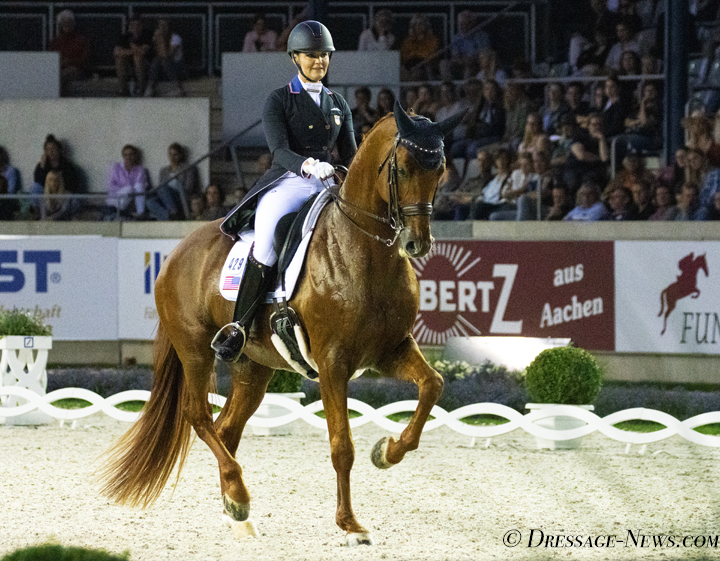
First Apple (Kenneth Braddick photo)
Rounding out the ten we have Vivaldi, another gracefully slipping away, although he has a band of sons making their mark as breeding stallions. Vivaldi’s leading representative is that very attractive chestnut stallion, First Apple, out of a Partout mare.
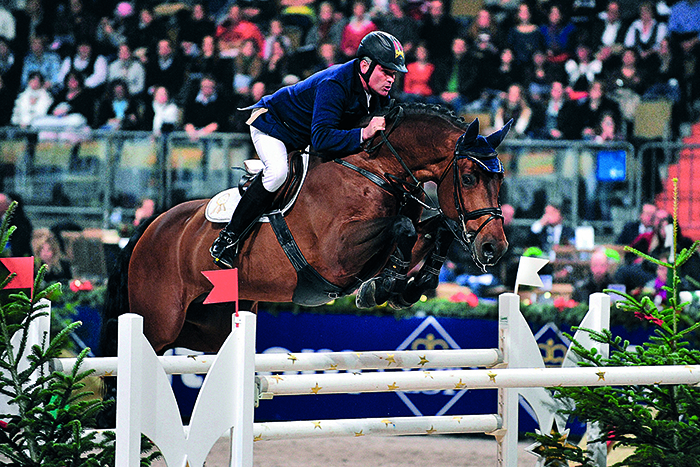
Chacco-Blue
Turning our attention to the jumping sires we find there has not been a lot of movement, Chacco-Blue is 1st again, and Le Diamant de Sémilly stays 2nd, while Mylord Carthago 4th last year and Kannan (3rd) swap places. Toulon representing that great Dutch father and son combination, Nimmerdor and Heartbreaker, up from 6th to 5th, while the mighty Casall slides from 3rd to 6th and Cardento moves from 5th to 7th.
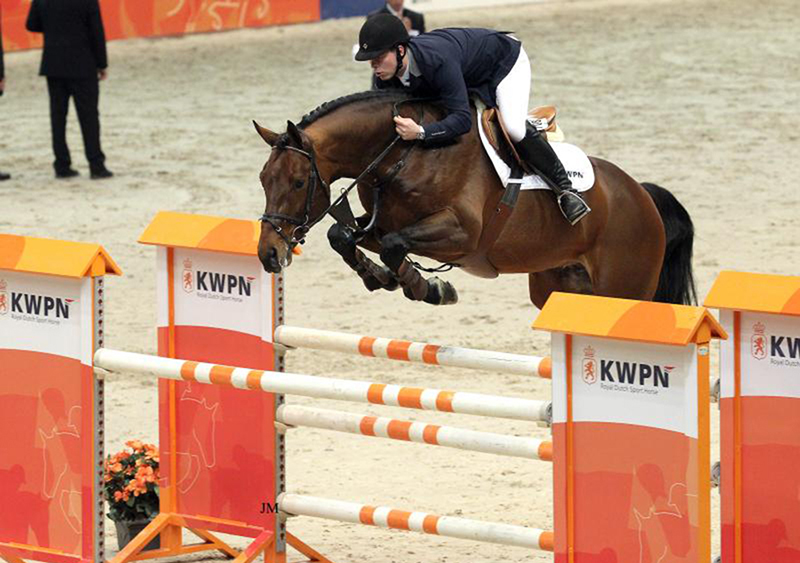
Eldorado vd Zeshoek
The only real mover in the ten is Eldorado vd Zeshoek thanks to his son, Elektric Blue P (For Pleasure) a superstar with Austria’s Max Kühner. Nabab de Rêve seems to be a permanent feature in the WBFSH top ten, and he is in 9th thanks to world number 30 Brooklyn Heights, another out of a For Pleasure mare, what a sire he has been!
Zirocco Blue takes 10th thanks to his daughter, Glamour Girl out of a Caletto I mare, ridden by man of the moment, Henrik von Eckermann into 28th on the world standings.
I guess you weren’t expecting any surprises on the eventing rankings, and you were right.
Diarado has moved from second to first on the Eventing Sires rankings, but I suspect this is at least in part the result of the enormous number of mares he has bred each year. We are still waiting for him to produce a star, his best so far has been world number 27, QC Diamantaire ridden by American Sydney Elliott.

Sydney Elliott and QC Diamantaire. Photo by Shannon Brinkman
The second ranked Grafenstolz is the real thing when it comes to an eventing sire. He competed three-star with Michi Jung, and is the sire of a host of eventers, including three at five-star level, lead by the world number four, Lordships Graffalo. And it should be noted that while Diarado had hundreds of mares a year – at least at first- Grafenstolz covered just a few. 48 of his progeny evented internationally in 2021 alone
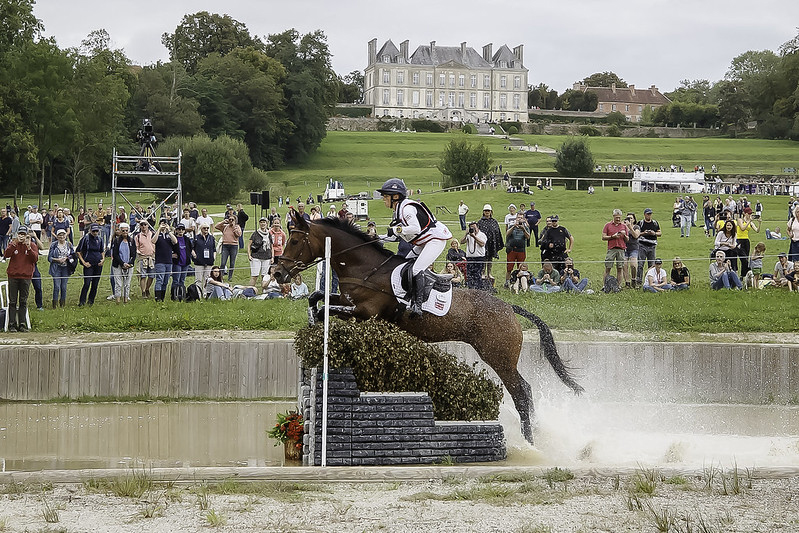
Lordships Graffalo
Third to another of those imports that reinvigorated Irish breeding, Obos Quality by Quick Star out of a Domspatz mare. He has actually been more successful as a sire of showjumpers, but has still produced three 5* eventers. His current best representative is ranked 161st in the world.
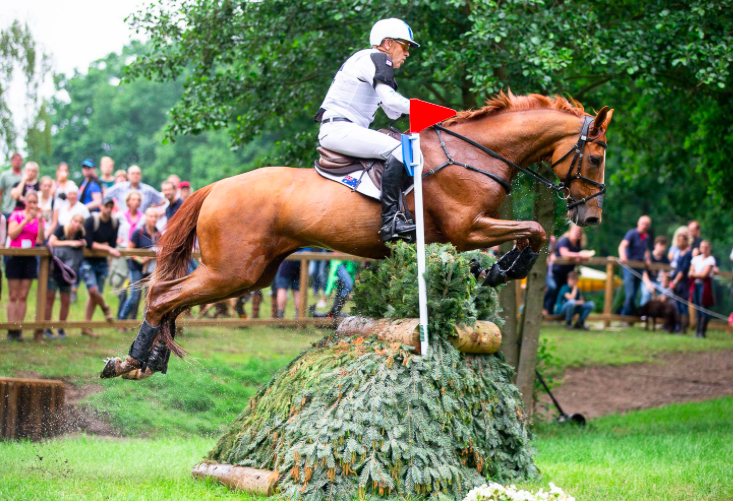
Vassily de Lassos
Fourth to Jaguar Mail, by Hand in Glove xx out of a mare by Laudanum xx, with just an eighth non-Thoroughbred, through the mare Adoret Z (Almé / Gotthard). Jaguar Mail has been a mainstay of eventing breeding for some time, producing three five-star eventers including two real stars, Vassily de Lassos and Tenareze.
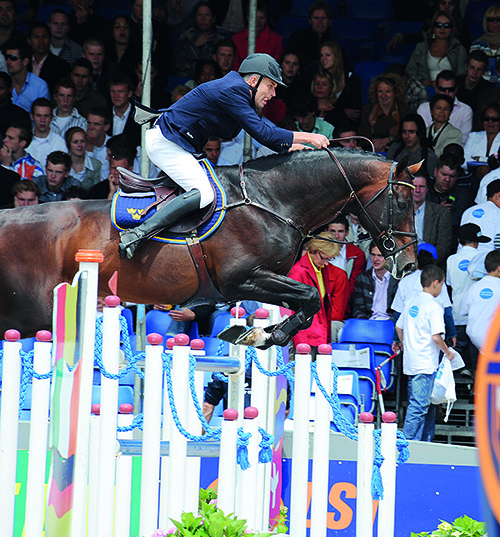
Jaguar Mail
After last year’s WBFSH sires rankings were released, my friend Ludwig Christmann and I were both puzzled by the apparent anomaly that the leading sires did not seem to be producing the leading competitors, and we suggested that perhaps the rankings’ formula needed tweaking. This year’s rankings only serve to reinforce that impression…



remarkable article. Thank you